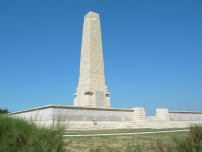| First Name: | Albert Robert | Last Name: | COLEMAN | |
|---|---|---|---|---|
| Date of Death: | 28/04/1915 | Lived/Born In: | Custom House | |
| Rank: | Private | Unit: | Essex1 | |
| Memorial Site: | Helles Memorial, Gallipoli | |||
Current Information:
Age-25 Born-West Ham
Gallipoli 1915 On 25 April, 1915, British, Australian and New Zealand forces landed on the Gallipoli peninsula. The plan was that these forces would soon defeat a demoralised Turkish army, knock Turkey out of the war, open up the Mediterranean to the Russian navy and threaten Austro-Hungary from the south.None of these things were achieved despite nine months of hard fighting in terrible conditions. It was a heroic failure. The 29th Division and the Royal Naval Division landed at five separate beaches around Cape Helles. Some were not defended, others were fiercely contested. Some ground was gained but within days the familiar pattern of trench warfare had set in. A similar pattern emerged further north where the ANZACS landed. The Turkish soldiers were much tougher fighters than had been given credit for and they were of course fighting an invasion of their homeland. The terrain, a series of steep rocky ridges and deep gullies made the fighting much more difficult and during the hot summer of 1915, the flies arrived in biblical proportions. Another seven British divisions were sent to Gallipoli during the summer but little or no progress was made. In the end, a new Commander was appointed and plans to evacuate the entire force were drawn up. By January 1916, all British, Australian and New Zealand forces had left Gallipoli, leaving only behind the dead, over 56,000 of them. First Battle of Krithia 28th April 1915 During the two days after the successful but costly landings at Helles on 25th April, the soldiers of 29th Division consolidated their foothold and pushed the line forward, in preparation for an assault on the village of Krithia. At 8am on 28th April, naval guns began the bombardment of Turkish positions and the long line of infantry began to move forward in a long left wheel. But things did not go to plan. Orders arrived late so there was no time to prepare. The terrain, criss-crossed by gullies and ridges, hampered progress so some units advanced quicker than others. The men were all dog tired after three days with precious little sleep and many of the senior officers had become casualties, creating a problem with leadership. The strength and whereabouts of the the Turks was entirely unknown but eventually they were able to put in nine battalions against the advance and rather than a battle the day developed into a series of skirmishes until it was finally called off at 6 pm. The British suffered 3000 casualties on this day. 88 Brigade attacked in the centre of the line with 87 Brigade on their left and the French on their right. The 1st Essex, 2nd Hampshire and 4th Worcestershire battalions led the advance with 5th Royal Scots in support. All went well at first and no opposition was met nor was there much Turkish shelling but it proved impossible to maintain a uniform advance and much confusion reigned with individual skirmishes being fought as Turkish reinforcements began to arrive. A shortage of ammunition caused 88 Brigade’s advance to come to a halt by 11.30am. No further progress was made and 1st Essex practically ended up where they started from and with over one hundred casualties, one of whom was Albert Coleman. |
||||
| « Back to Search Results | ||||
| If you think any of the information shown here is incorrect, Click Here to submit your amends and comments | ||||




